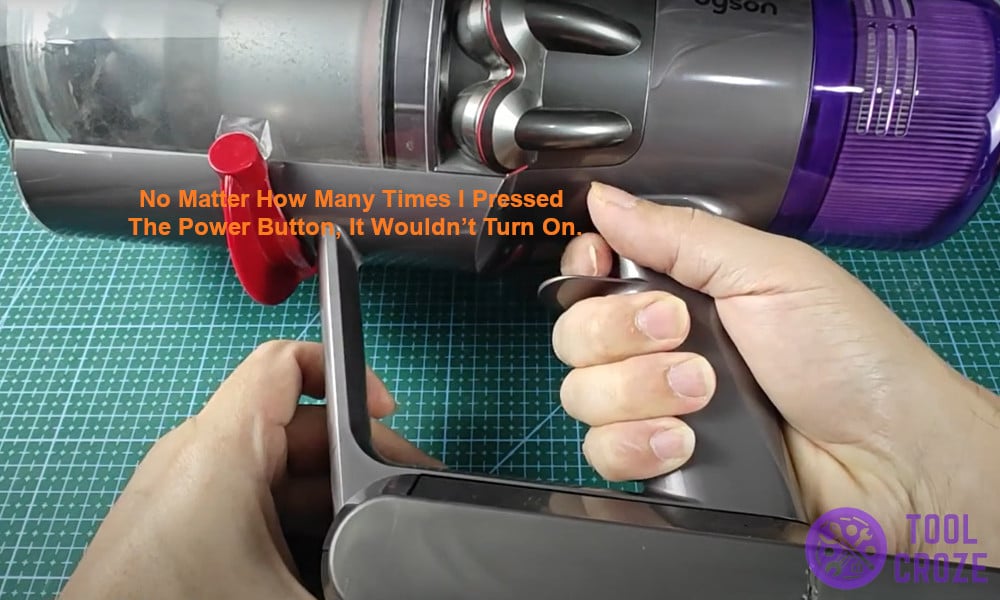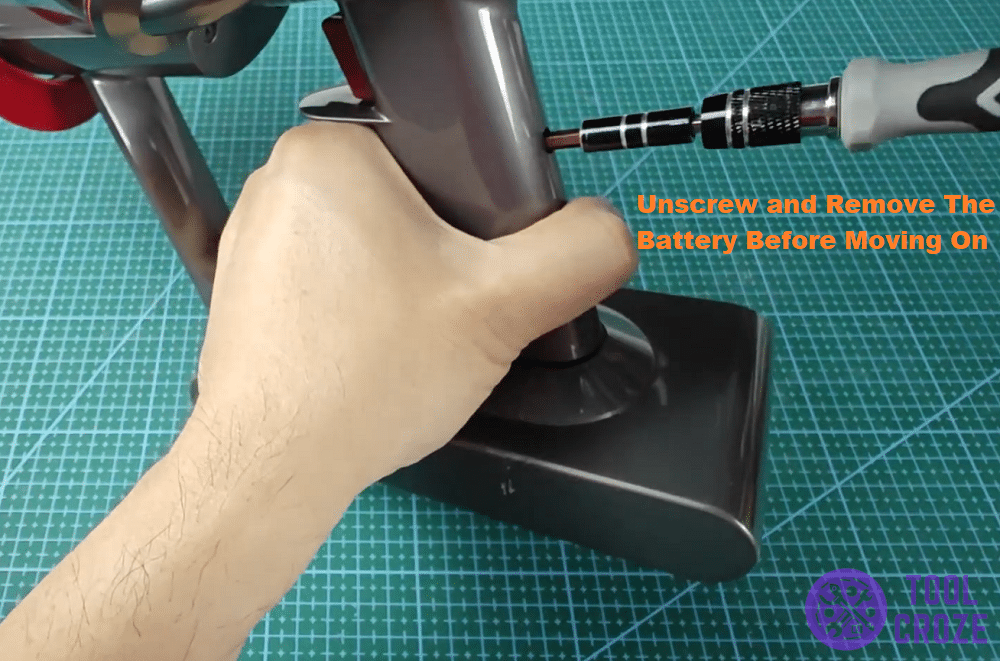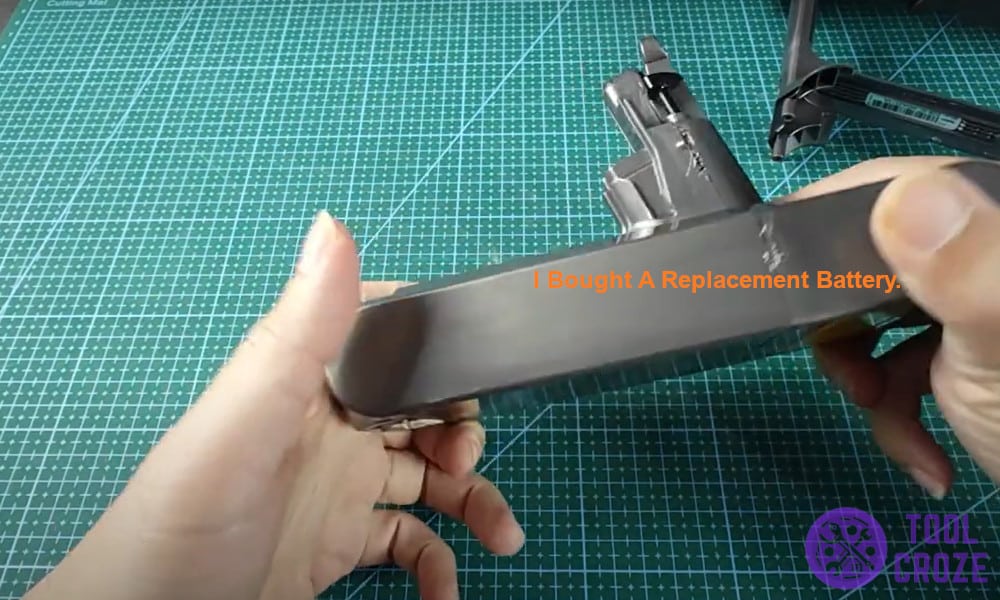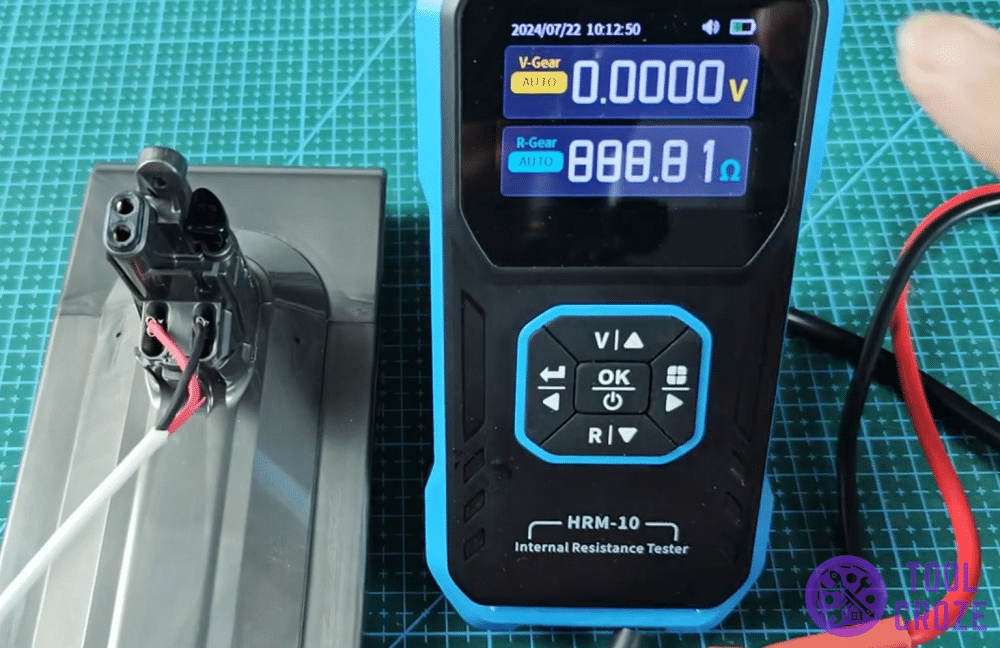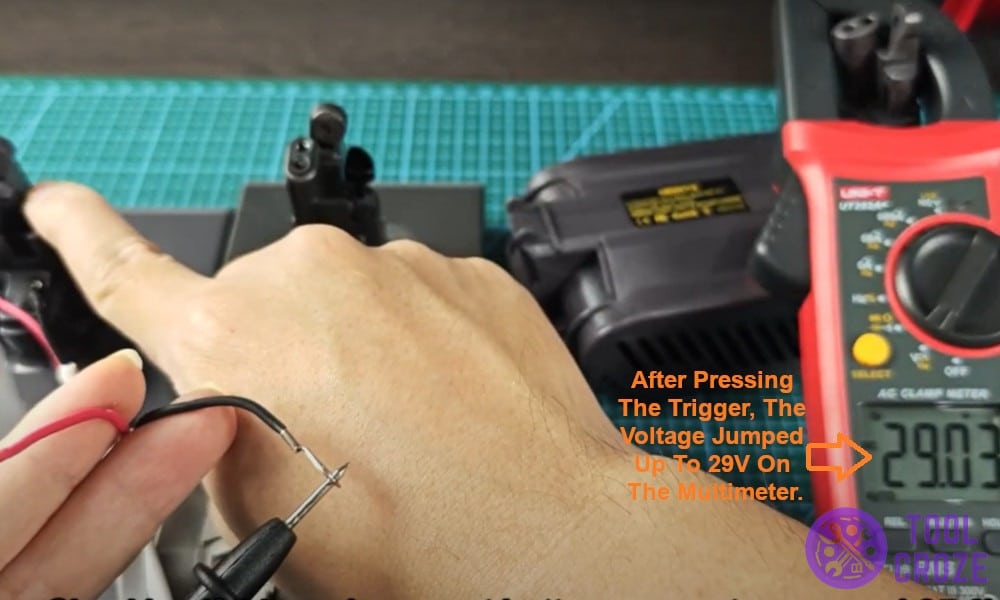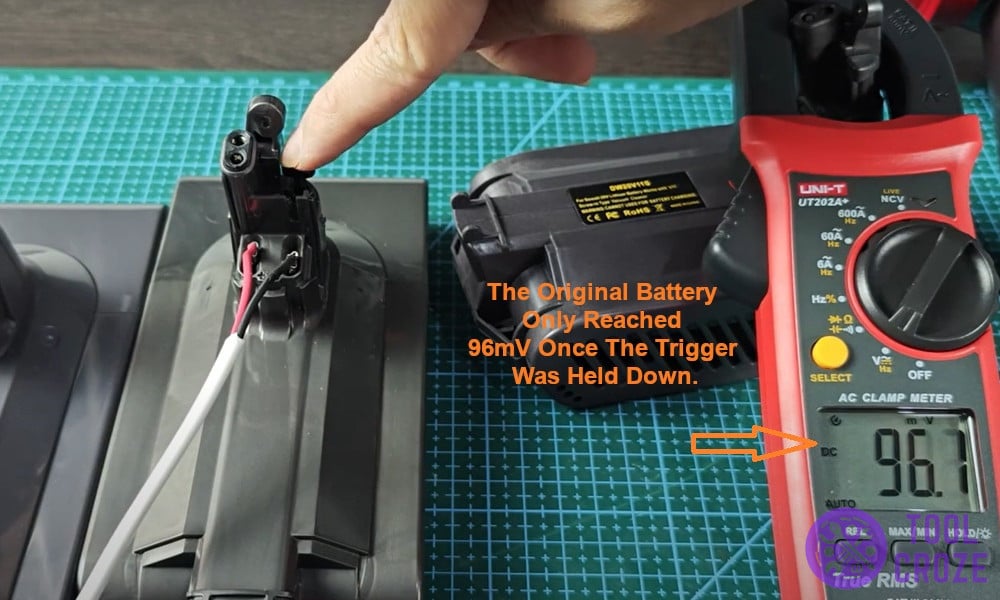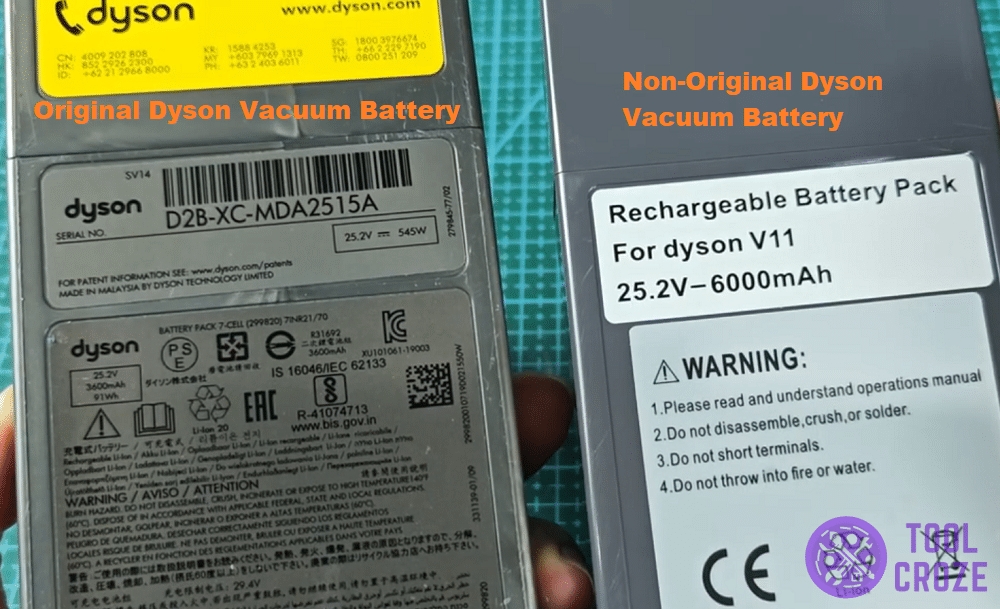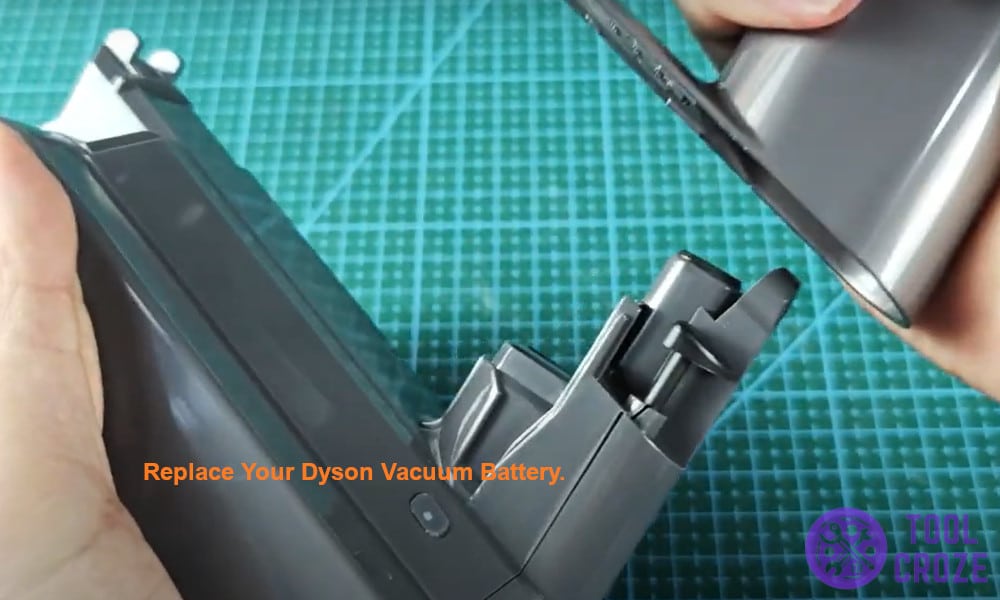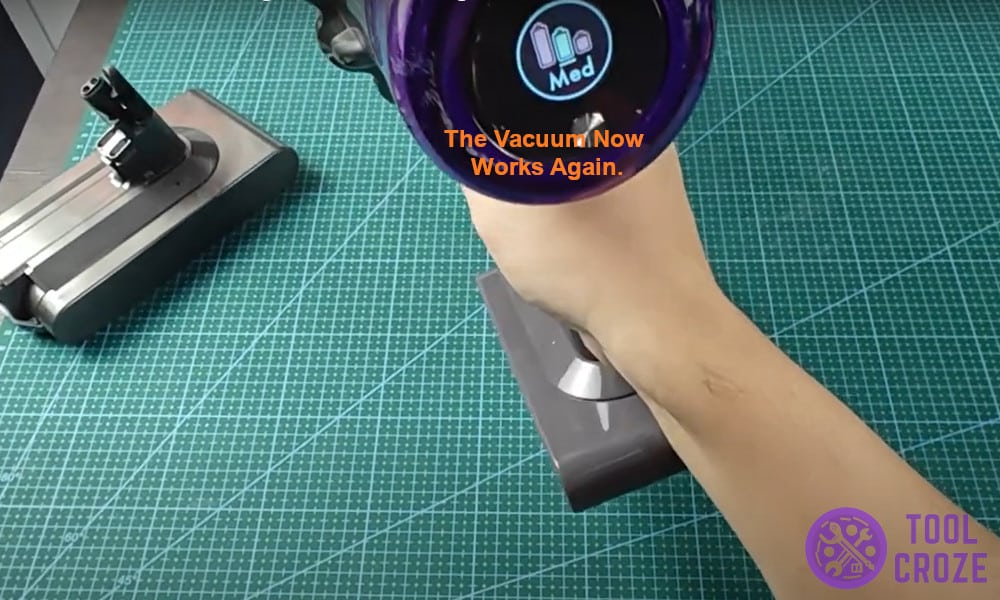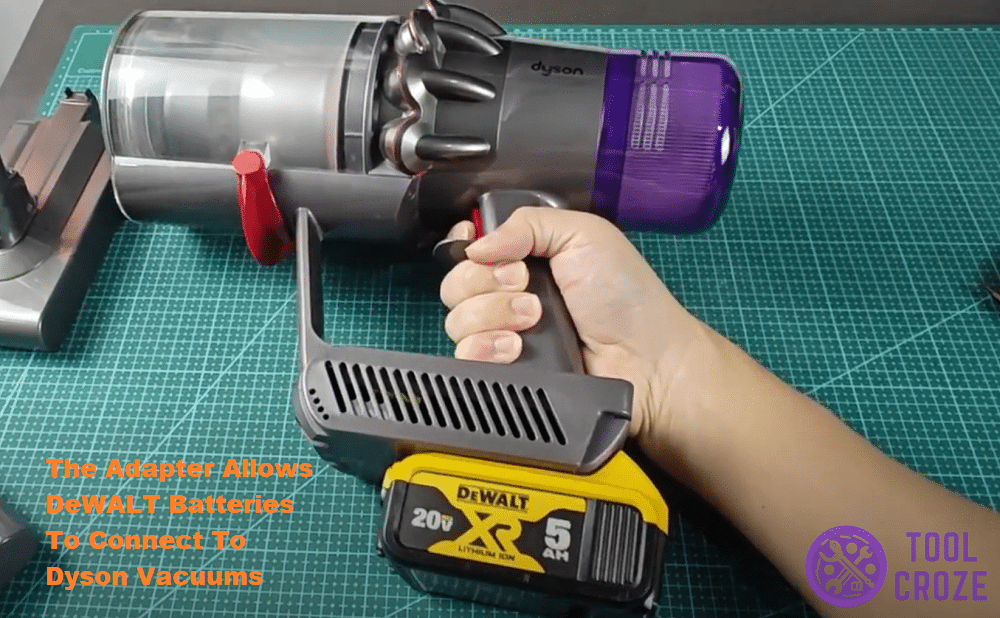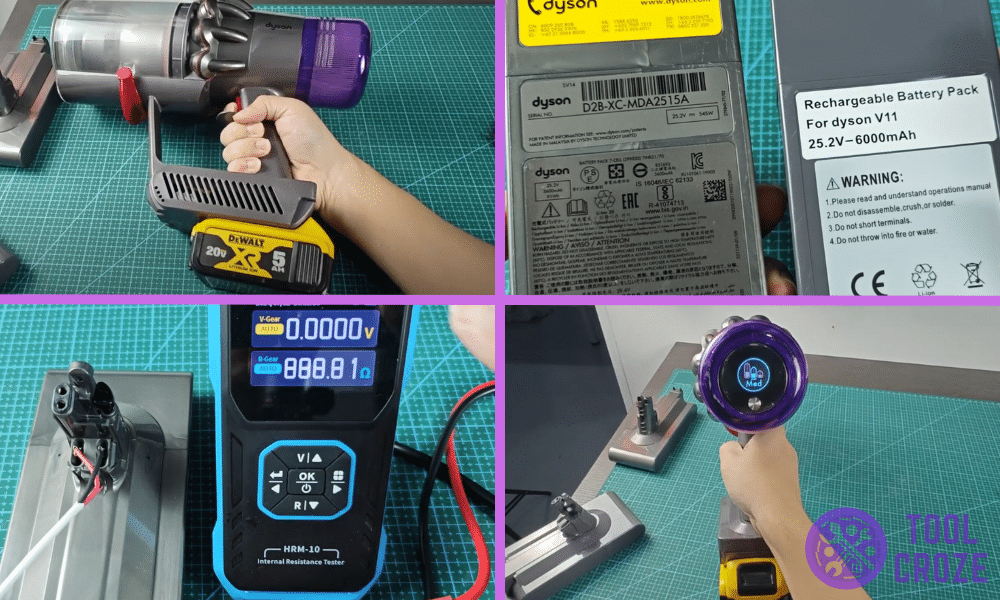
Got a Dyson cordless vacuum that’s not turning on? I went through something similar recently and was able to fix it. Keep reading to find out how, and test it out yourself!
I also made a short video about how you can fix a Dyson cordless vacuum that’s not turning on. You can watch it below before you continue reading this article.
If the battery is dead, you may have to replace it with a new Dyson battery. Or, you may also consider using a tool battery to Dyson adapter. Here, I use a DeWALT 20V battery on my Dyson v11 vacuum using the adapter.
4 Steps To Fix A Dyson Cordless Vacuum That’s Not Turning On
One day, my Dyson cordless vacuum just stopped working. No matter how many times I pressed the power button, it wouldn’t turn on.
What made it even weirder was that the battery wasn’t charging either. Usually, a blue light will flicker on the vacuum’s display to show it’s charging, but even that wasn’t popping up.
Related: Dyson Vacuum Light on but Not Working: Solutions I Recommend
Anyway, what’s more important is that I was able to fix that by following these four easy steps below. Try them out for yourself and hopefully, they’ll get your vacuum running again.
Step 1: Remove The Dyson Vacuum’s Battery
First, you have to unscrew the battery from its connection to the handle. Dyson’s vacuum design makes this pretty straightforward.
There is a screw where you grip the vacuum, on the backside away from the trigger. There are two more on the bottom of the battery, towards the front.
Once those are out, you should be able to pull the battery out easily. It might be a little heavy, so do this on a table to avoid dropping either the vacuum or its battery on the floor.
Also, make sure you keep the screws somewhere safe while you’re working on the battery. You don’t want to lose them!
Step 2: Check The Battery’s Voltage
For this step, I bought a replacement battery to compare with the old one. Using a multimeter, I first tested the output voltage of the original battery.
I did that by placing the ends of a battery cable into the positive and negative terminals – these are identified on the plastic casing around the terminals themselves.
The multimeter works by making itself a part of the battery’s circuit once connected. On the original battery, it kept reading 0V, which was a clear sign that something was wrong.
Without pressing the battery trigger (the black button above the terminals), the battery should still be releasing some sort of voltage once connected.
Next, I checked my new, healthy battery for reference. Without the trigger activated, there was some voltage, which I expected.
After pressing the trigger, the voltage jumped up to 29V on the multimeter. If you look at the underside of the Dyson battery, you can see it should read as 25.2V or close to that.
A functional battery will remain either slightly above or slightly below the manufacturer’s voltage. Something lower will indicate a problematic or low-power battery.
29V is a bit high, but it’s still within an acceptable range. On the other hand, the original battery only reached 96mV once the trigger was held down.
That is way too low to support something as power-hungry as a Dyson vacuum.
Step 3: Replacing The Battery
Replacing the old battery was a straightforward swap and immediately solved my problem. However, it’s important to stop and consider the type of replacement battery you use.
I wouldn’t always recommend doing what I did. My replacement battery was a non-original battery, meaning it wasn’t manufactured by Dyson specifically for my V11 vacuum.
These can be faulty because they may not have all the right components to prevent overheating, charging issues, or even voltages that range from too low or too high.
I got the non-original battery just to test out the voltage readings and see if my hunch would work.
To replace your Dyson vacuum battery, I suggest you buy the correct, branded battery if you can to make sure your vacuum operates smoothly and without issues.
But if you want to opt for a more economical approach and get the non-original version, just stay on the side of caution and research battery sellers before making a purchase.
Make sure the battery comes with safety certifications and a warranty, too. You want to be sure you can trust the source you got your replacement from.
But before you buy a new battery for your Dyson cordless vacuum battery you could also try to reset it using a DC power supply. I have made a short video which shows how you can do this and you can watch it below.
The Dyson battery for my vacuum has an output voltage of 25.2V so I set the DC power supply to around 25V. Then, connect it to the positive and negative terminals of the Dyson battery.
Next, slowly increase the current of the DC power supply until it reaches around 1A. Let it stay connected for 10 seconds, then disconnect it. This may reset the Dyson battery and it will start to charge properly again.
Step 4: Using A Tool Battery Adapter
If replacing the Dyson battery with a new one isn’t your ideal solution, there is another option; a tool battery to Dyson adapter.
These little things can allow you to connect a battery to an adapter that can be attached to the vacuum. You can see the adapter in the picture under this.
It has a slot on the bottom for a battery to slide into and the components on top similar to the original Dyson battery, which allows it to slip into place on the handle.
Any tool battery will do – Black and Decker, Ryobi, Milwaukee. These are often more affordable and widely available. Just ensure the voltages are within an appropriate range for safety.
Using an incompatible voltage could damage the vacuum or decrease its performance capabilities. To out the Dyson battery adapter, I used a DeWalt 20V battery. It worked perfectly!

